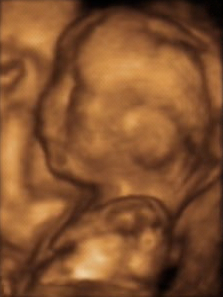Intrauterine growth restriction
Editor-In-Chief: Prab R Tumpati, MD
Obesity, Sleep & Internal medicine
Founder, WikiMD Wellnesspedia &
W8MD medical weight loss NYC and sleep center NYC
| Intrauterine growth restriction | |
|---|---|

| |
| Synonyms | Intrauterine growth retardation (IUGR) |
| Pronounce | N/A |
| Specialty | N/A |
| Symptoms | Small for gestational age, decreased fetal growth |
| Complications | Stillbirth, preterm birth, neonatal hypoglycemia, cerebral palsy |
| Onset | During pregnancy |
| Duration | Until birth |
| Types | N/A |
| Causes | Placental insufficiency, maternal hypertension, maternal malnutrition, multiple gestation |
| Risks | Maternal smoking, alcohol use, drug use, preeclampsia |
| Diagnosis | Ultrasound, Doppler ultrasound |
| Differential diagnosis | Constitutional smallness, genetic disorders |
| Prevention | Prenatal care, nutritional support, smoking cessation |
| Treatment | Monitoring, early delivery if necessary |
| Medication | N/A |
| Prognosis | N/A |
| Frequency | 3-7% of pregnancies |
| Deaths | N/A |
Intrauterine growth restriction (IUGR), also known as fetal growth restriction (FGR), is a condition where a fetus is unable to achieve its genetically determined potential size. This can be due to a variety of factors, including maternal, placental, or fetal issues.
Definition[edit | edit source]
IUGR is typically defined as a fetal weight that is below the 10th percentile for gestational age. This means that the fetus is smaller than 90% of all other fetuses of the same gestational age. It is important to distinguish IUGR from small for gestational age (SGA), which refers to any fetus or newborn that is smaller than 90% of their peers, regardless of the cause.
Causes[edit | edit source]
The causes of IUGR can be divided into three categories: maternal, placental, and fetal.
Maternal Causes[edit | edit source]
Maternal causes of IUGR include conditions that affect the mother's health or her ability to provide nutrients to the fetus. These can include malnutrition, anemia, hypertension, and diabetes. Maternal smoking and alcohol use can also contribute to IUGR.
Placental Causes[edit | edit source]
Placental causes of IUGR involve conditions that affect the placenta's ability to supply nutrients and oxygen to the fetus. These can include placental insufficiency, where the placenta is not functioning properly, and placental abruption, where the placenta detaches from the uterus prematurely.
Fetal Causes[edit | edit source]
Fetal causes of IUGR involve conditions that affect the fetus directly. These can include genetic disorders, infections, and multiple gestations (such as twins or triplets).
Diagnosis[edit | edit source]
Diagnosis of IUGR is typically made through ultrasound measurements of the fetus. Other tests may include Doppler ultrasound to assess blood flow in the umbilical artery, and amniocentesis to check for genetic disorders.
Treatment[edit | edit source]
Treatment for IUGR depends on the cause and severity of the condition. It may involve treating the mother's underlying health condition, such as controlling her diabetes or hypertension. In some cases, early delivery may be necessary.
Prognosis[edit | edit source]
The prognosis for babies with IUGR depends on the cause and severity of the condition. Some babies may catch up in size after birth, while others may have long-term growth problems. Babies with IUGR are at higher risk for complications such as low birth weight, premature birth, and neonatal intensive care unit (NICU) admission.
Search WikiMD
Ad.Tired of being Overweight? Try W8MD's NYC physician weight loss.
Semaglutide (Ozempic / Wegovy and Tirzepatide (Mounjaro / Zepbound) available. Call 718 946 5500.
Advertise on WikiMD
|
WikiMD's Wellness Encyclopedia |
| Let Food Be Thy Medicine Medicine Thy Food - Hippocrates |
Translate this page: - East Asian
中文,
日本,
한국어,
South Asian
हिन्दी,
தமிழ்,
తెలుగు,
Urdu,
ಕನ್ನಡ,
Southeast Asian
Indonesian,
Vietnamese,
Thai,
မြန်မာဘာသာ,
বাংলা
European
español,
Deutsch,
français,
Greek,
português do Brasil,
polski,
română,
русский,
Nederlands,
norsk,
svenska,
suomi,
Italian
Middle Eastern & African
عربى,
Turkish,
Persian,
Hebrew,
Afrikaans,
isiZulu,
Kiswahili,
Other
Bulgarian,
Hungarian,
Czech,
Swedish,
മലയാളം,
मराठी,
ਪੰਜਾਬੀ,
ગુજરાતી,
Portuguese,
Ukrainian
Medical Disclaimer: WikiMD is not a substitute for professional medical advice. The information on WikiMD is provided as an information resource only, may be incorrect, outdated or misleading, and is not to be used or relied on for any diagnostic or treatment purposes. Please consult your health care provider before making any healthcare decisions or for guidance about a specific medical condition. WikiMD expressly disclaims responsibility, and shall have no liability, for any damages, loss, injury, or liability whatsoever suffered as a result of your reliance on the information contained in this site. By visiting this site you agree to the foregoing terms and conditions, which may from time to time be changed or supplemented by WikiMD. If you do not agree to the foregoing terms and conditions, you should not enter or use this site. See full disclaimer.
Credits:Most images are courtesy of Wikimedia commons, and templates, categories Wikipedia, licensed under CC BY SA or similar.
Contributors: Kondreddy Naveen, Prab R. Tumpati, MD


